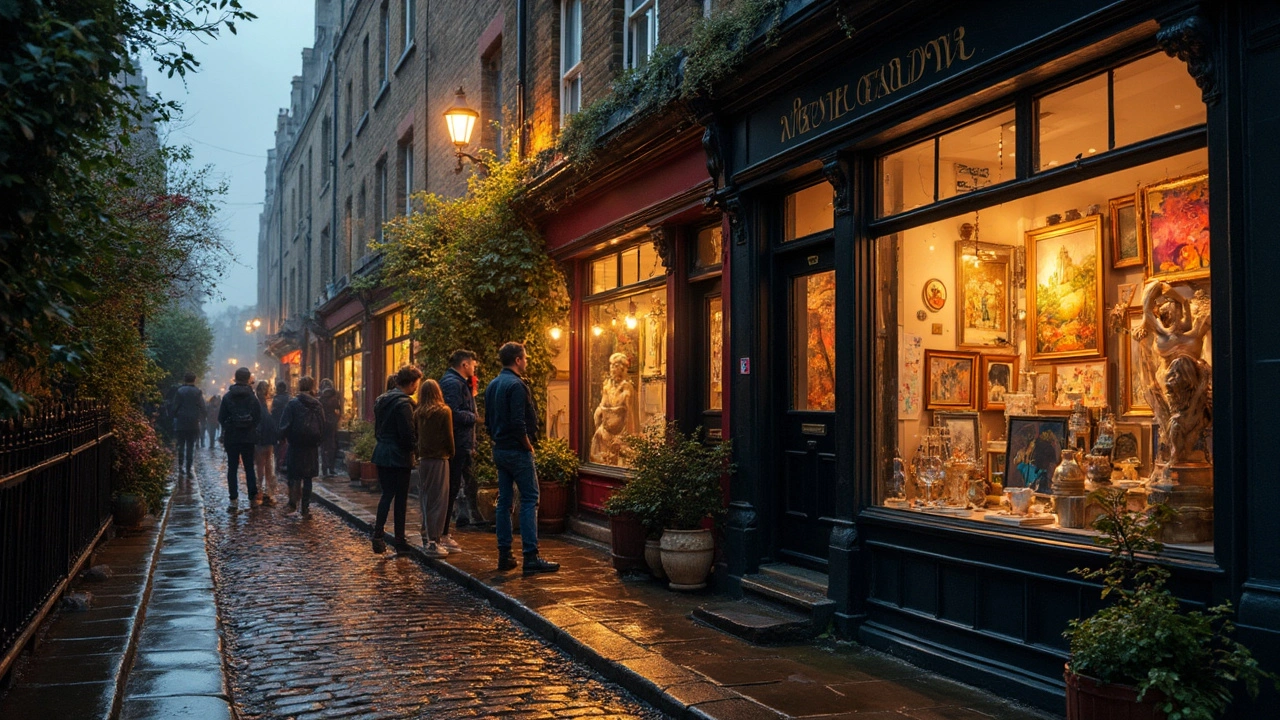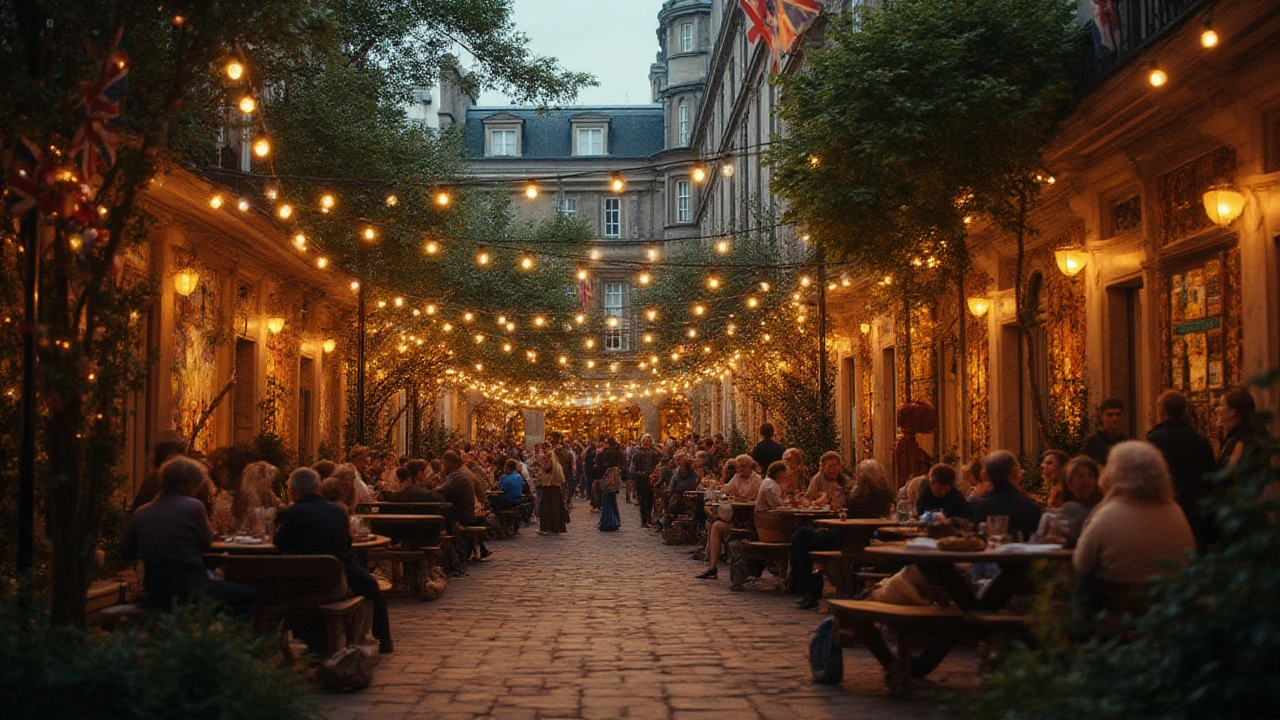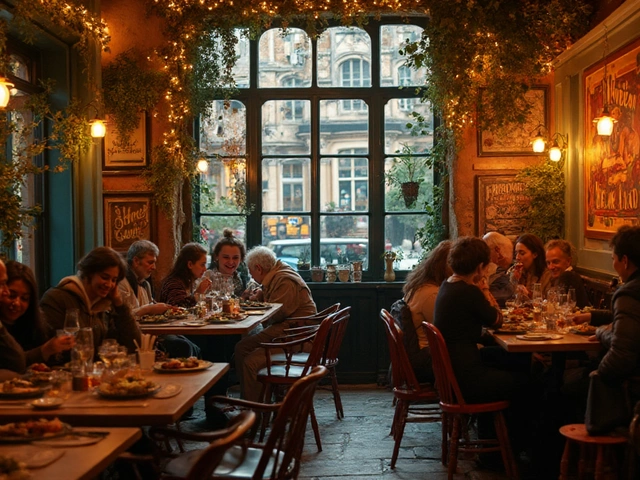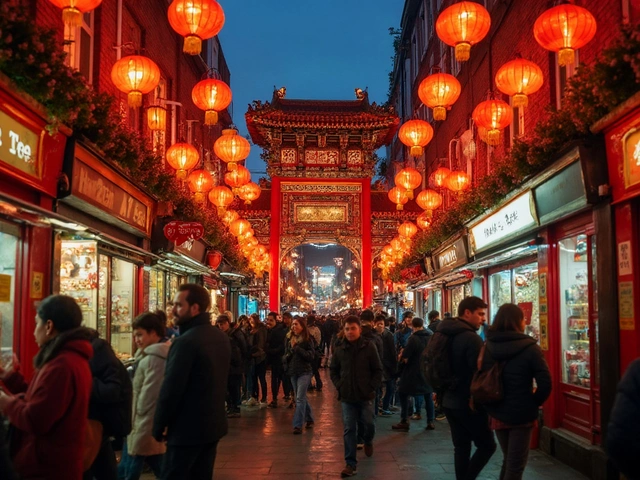
You think you’ve seen it all—Eiffel Tower, Machu Picchu, Grand Canyon. I get it. But here’s the wild part: some of the world’s coolest landmarks barely make it onto most bucket lists. There’s a tiny Slovenian church in the middle of a crystal-clear lake, a neon-lit Buddhist temple carved into a cliff in Thailand, and even a “ghost tower” skyscraper sprouting plants right in downtown Bangkok.
Missing these spots is like walking past a bakery without noticing the smell of fresh bread—you just don’t realize what you’re missing until someone points it out. I’m here to tip you off. We’re diving into the most surprising, photo-worthy landmarks you’ve probably never heard of, with tips on why they’re worth visiting and how to actually find them. Whether you want weird, mind-blowing, or downright quirky, these places are more than just a pin on Google Maps—they’re stories waiting to happen.
- Key Surprising Landmarks You Didn’t Know Existed
- Why These Hidden Gems Matter
- Different Types of Quirky Landmarks to Visit
- How to Discover Off-the-Beaten-Path Spots
- Practical Tips for Exploring Lesser-Known Sights
- Landmarks Comparison Table: Surprising Gems vs Famous Icons
Key Surprising Landmarks You Didn’t Know Existed
You already know about the big hitters, but let’s talk about must-see landmarks that barely show up even if you scroll for hours on Instagram. These are places where GPS sometimes gets confused and crowds barely show up. Still, they’ll make everyone back home jealous of your travel stories.
- Lake Bled’s Island Church (Slovenia): There's a tiny, seriously picture-perfect church on an island right in the middle of Lake Bled. Locals say if you ring the church bell, your wish could come true. No tour buses, no chaos—just you, rowboats you have to paddle yourself, and maybe some curious swans.
- Wat Samphran Dragon Temple (Thailand): This pink, coiled-dragon temple outside Bangkok looks like a movie set. The dragon is actually a crazy spiral staircase you can walk up. Not many tourists even realize it exists because it’s hidden outside main city routes.
- Capuchin Catacombs (Palermo, Italy): Okay, this one is a little eerie—but fascinating. The underground tunnels hold thousands of mummified bodies, many of whom are still in their original clothes. It’s not everyone’s cup of tea, but history buffs call it mind-blowing.
- Salar de Uyuni’s Train Graveyard (Bolivia): Imagine abandoned steam trains sitting in the world’s widest salt flat. It’s like something from a post-apocalyptic movie, except it’s real—and you can climb on the old locomotives (safely, of course).
- Kawah Ijen’s Blue Fire (Indonesia): Only at night do the volcano’s sulfuric gases glow an electric blue. Less than 1,000 people visit each month, but it’s hands-down one of the most jaw-dropping sights I’ve ever seen in person.
Each of these hidden gems flies way under the radar, even though their stories and visuals match any iconic site. Wondering if these places are really worth it? Consider this from Lonely Planet:
“Getting off the beaten track doesn’t just give you better photos—it gives you better memories, and often a deeper connection to a place.”
One thing’s for sure: if you’re chasing Instagrammable moments or stories no one else at work will believe, these offbeat travel secrets are the real deal. Just make sure you check opening hours and transport—some of these take a bit of planning, but the bragging rights are worth every minute.
Why These Hidden Gems Matter
So why do these must-see landmarks and underrated hidden gems actually matter, especially when places like the Colosseum or the Pyramids exist? First off, popular spots get crowded—sometimes painfully so. A 2023 report showed that tourists outnumbered residents in Venice 2 to 1 on peak days. That’s not exactly the best scene for soaking up history or getting a good photo.
The beauty of unknown unusual landmarks is the real sense of discovery. You walk in not jostling with selfie sticks but actually chatting with locals or hearing wild backstories. In Slovenia, Lake Bled’s tiny island only fits a handful of visitors at once, so you get to ring the church bell without a line. In Canada, Pingualuit Crater—the “Crystal Eye”—has water so pure, you can see 35 meters down. Most of these places don’t even have entry fees or timed tickets to battle over.
Another big deal? Hidden gems give culture a spotlight. Visit the neon-lit Wat Samphran Dragon Temple near Bangkok, and you’ll see Buddhist architecture fused with fantasy—something you’d completely miss if you only hit Thailand’s ‘top five’ temples. These offbeat attractions bring local legends, food, and people into your trip in ways tourist-packed icons can’t. Some even help inject cash right back into smaller communities instead of giant ticket offices.
Here’s a quick comparison that shows just how different the experience can be:
| Famous Icon | Surprising Hidden Gem |
|---|---|
| Machu Picchu (up to 5,000 daily visitors) | Kuelap Fortress, Peru (few hundred visitors daily, no lines) |
| Liberty Bell (long entry queues; busy year-round) | National Shrine of St. Rita, Philadelphia (rarely crowded, free tours) |
| Grand Canyon Skywalk ($64 entry; crowded overlooks) | Goosenecks State Park, Utah (free, wide-open, no crowds) |
Bottom line: these must-see landmarks nobody talks about give you fresh stories, clean photos, and real memories. It’s about swapping mass crowds for genuine wow moments, and sometimes even saving money or supporting smaller towns while doing it.
Different Types of Quirky Landmarks to Visit
If you’re over the crowds at big-name icons, there’s a whole world of must-see landmarks that fly under the radar. These aren’t just “weird” for the sake of being weird—they tell local stories, surprise you with their design, or just leave you scratching your head in the best way. Here’s how to spot the different types when you’re searching for your next adventure.
- Naturally Odd Wonders: Mother Nature’s got jokes. Ever heard of Fly Geyser? Tucked away in Nevada’s Black Rock Desert, it looks like something out of a sci-fi movie, with rainbow mineral deposits and steaming geysers that never stop bubbling. Same vibe with the Marble Caves in Chile—the swirling caves look airbrushed, but nope, they’re real.
- Unusual Architecture: Not every building follows the playbook. Think about the Crooked House in Poland—imagine a cartoon building melted by the sun. Or Bangkok’s Elephant Tower, just what it sounds like: a high-rise shaped like a giant elephant, right in the city.
- Unexpected Places of Worship: Some spiritual spots take things up a notch. In Thailand, the White Temple (Wat Rong Khun) mixes pop culture—superheroes, spaceships—into its art. Then there’s Sedlec Ossuary in the Czech Republic, a chapel decorated with bones from up to 70,000 people. Creepy, curious, and strangely beautiful.
- Gigantic Sculptures and Odd Installations: Some places go all-in on “memorable.” Picture the Hand of the Desert, a massive stone hand rising out of the Chilean Atacama. Or Canada’s Giant Nickel—a coin so big you can lean on it like a wall.
- Forgotten Places Revamped: In Japan, the abandoned Hashima Island (aka Gunkanjima or "Battleship Island") was once one of the world’s most densely packed places, totally deserted by 1974. Now it’s open for tours and movie shoots (it’s even in a James Bond film).
Sometimes the best part comes from not knowing what you’ll get. These hidden gems are scattered everywhere—urban, rural, even underwater. Want to see how much variety’s out there? Check out the breakdown below:
| Landmark Type | Examples | Region |
|---|---|---|
| Naturally Odd Wonders | Fly Geyser, Marble Caves | USA, Chile |
| Unusual Architecture | Crooked House, Elephant Tower | Poland, Thailand |
| Places of Worship | White Temple, Sedlec Ossuary | Thailand, Czech Republic |
| Giant Sculptures | Hand of the Desert, Giant Nickel | Chile, Canada |
| Forgotten Places | Hashima Island | Japan |
Next time you’re trip planning, keep these types in mind. You might end up with a cooler story—and way fewer tourist photobombs—in your album.

How to Discover Off-the-Beaten-Path Spots
Uncovering hidden gems isn’t magic—it just takes a different approach than scrolling the first page of travel guides. You don’t need to spend hours lost in boring travel forums, either. Here’s how real travelers find the world’s most surprising must-see landmarks and skip the selfie-crowds.
- Dig Into Local Blogs and Social Media: Locals always know the coolest spots. Search Instagram hashtags by location, or use TikTok—try things like #SecretSpots[CityName]. You’ll see way more than the usual top ten lists.
- Ask Taxi Drivers and Café Owners: I’ve found some of my favorite places by just chatting with people who live in the area. Soren and I once discovered a legendary graffiti wall in Athens, just from a barista’s tip.
- Check Small-Print Guidebooks: Big publishers almost always stick to what’s popular. Grab a zine or small-press guide (many indie bookstores sell travel booklets) for the weird, wonderful, and overlooked.
- Use Travel Apps With a Twist: Apps like Atlas Obscura, Detour, and even Google Maps (zooming in to street level in areas you don’t recognize) are gold mines for unusual finds. Atlas Obscura alone lists over 20,000 offbeat attractions.
- Check Out Local Event Calendars: When you see a festival or seasonal event in a tiny village, go! These experiences often lead you to landmarks you won’t see in a typical tour.
Ever heard that two-thirds of travelers say “unique experiences” are their main reason for picking a destination? Here’s why it matters: You’ll remember the hand-painted cave you squeeze into or the neon-lit temple down a quiet alley way more than just ticking off a famous name.
| Source | Unique Landmarks Listed (2024) |
|---|---|
| Atlas Obscura | 20,000+ |
| Google Maps (Hidden Spots) | Approx. 12,000 |
| Local Tourism Boards* | Varies by city |
*Local boards are underrated! Many have English websites with a “hidden spots” section—don’t sleep on these.
Crowds aren’t the only thing you avoid; these offbeat attractions usually mean cheaper entry and a more authentic slice of local life. Keep an open mind, ask questions, and go where few others bother to look. Your best travel memories often start with a little curiosity.
Practical Tips for Exploring Lesser-Known Sights
If you’re chasing must-see landmarks that aren’t clogged with crowds, you need a game plan. The best finds are usually tucked away and might not show up on the first page of a Google search. Here’s how I track down those hidden gems and make sure the visit goes smoothly.
- Start with Local Resources: Tourist boards, city blogs, and local tourism social media accounts rarely advertise the big-ticket attractions—they’re full of neighborhood secrets. Try searching for city forums and Facebook groups specifically for locals rather than tourists.
- Use Niche Travel Apps: Apps like Atlas Obscura, Roadtrippers, and Culture Trip are goldmines for quirky sites and hidden gems. The real perk? You’ll find GPS pins for offbeat places you’d probably never spot otherwise.
- Talk to Locals: Hotel staff, taxi drivers, or even that barista making your latte often have the best recommendations. I’ve even asked school teachers for the local spots they take their families to—worked like a charm in Portugal!
- Travel Off-Peak: The best time to visit an unusual site is usually on a weekday, early in the morning. Not only do you beat the rush, but sometimes the site itself is easier to find, since parking and access are less hectic.
- Check for Safety and Rules: Some spots have unusual access requirements or rules (like Villa Vescovile in Italy that opens just a few days a year). Double check opening hours, required permits, and safety notices. Skip anything labeled “private property”—no good photo is worth a fine or trouble.
- Bring the Right Gear: Most offbeat attractions aren’t on paved paths. Sturdy shoes, snacks, and extra water are a must. And if you’re hiking to a site, a downloaded map on your phone (Google Maps offline or Maps.me) could be a lifesaver if the cell signal dies.
When planning, keep tabs on your expenses and travel time. I like keeping a quick table for budgeting and time-tracking—here’s a handy example:
| Landmark Type | Average Cost (USD) | Travel Time from Nearby City |
|---|---|---|
| Natural Wonder | $0-$15 | 1-3 hours |
| Historical Ruin | $5-$20 | 1-2 hours |
| Quirky Museum | $3-$10 | 30 min - 1 hour |
Another real tip: Take tons of photos, but also jot down a few notes or voice recordings along the way. Those tiny details—like the friendly stray cat by the roadside shrine in Greece—make your travel stories stand out. And if you find a spot that’s truly mind-blowing, consider sharing the location on travel forums. That’s how these offbeat attractions stay on the map for curious travelers like us.
Landmarks Comparison Table: Surprising Gems vs Famous Icons
When you plan your next trip, you probably look up the obvious winners—stuff like the Eiffel Tower or the Statue of Liberty. But what if you could visit places with way fewer crowds, more interesting stories, and usually a much smaller dent in your wallet? Here’s how some of the world’s most must-see landmarks that are hidden gems stack up against the classic icons. These facts might just change your travel wishlist.
| Landmark | Type | Typical Crowds | Entry Cost | Photo Opportunities | Average Visit Time | Unique Factor |
|---|---|---|---|---|---|---|
| Lake Bled Church, Slovenia | Hidden Gem | Low to Moderate | €15 (includes boat ride) | Stunning lake/island shots | 2-3 hours | Church on an island; fairy-tale vibes |
| Eiffel Tower, Paris | Famous Icon | Very High | €20-30 | Classic city skyline, lots of crowds | 1-2 hours | Recognized worldwide; no surprises |
| Wat Pa Phu Kon, Thailand | Hidden Gem | Very Low | Free | Temple in forested mountains, blue-and-gold mosaics | 1-2 hours | Buddhist temple built into a cliff |
| Statue of Liberty, USA | Famous Icon | Very High | $25-30 (ferry + entry) | Classic harbor shots, large crowds | 3-4 hours | Symbol of the U.S.; featured in hundreds of movies |
| Sathorn Unique Tower, Bangkok | Hidden Gem | Low (urban explorers) | Free or small fee (unofficial tours) | Skyline views, urban decay shots | 1 hour | Unfinished skyscraper with wild stories |
| Colosseum, Rome | Famous Icon | Extremely High | €18-22 | Ruins, arena shots, always packed | 2-3 hours | Historic battles; ancient super-crowds |
So what’s the real difference? With hidden gems and lesser-known must-see landmarks, you usually dodge lines and tour buses. Your photos are way more unique (goodbye, endless heads in the frame), and you actually get to soak in the moment—no need to elbow tourists for a look.
- If you care about budget, most hidden gems come out way cheaper than the icons—sometimes even free.
- If you want a wow factor, they're full of wild stories and settings. Like Sathorn Unique Tower—where else can you see a skyscraper halfway taken back by nature?
- If you love exploring, these spots make you feel like a real-life adventurer, not just part of a human conveyor belt.
The classic spots aren’t bad—they earned their fame for a reason. But if you’re game for something new, give the surprising must-see landmarks a shot. Honestly, I’d rather show my kid photos from a mountain-top temple or an abandoned island church than add another Eiffel Tower selfie to the pile.
Categories
Popular Articles
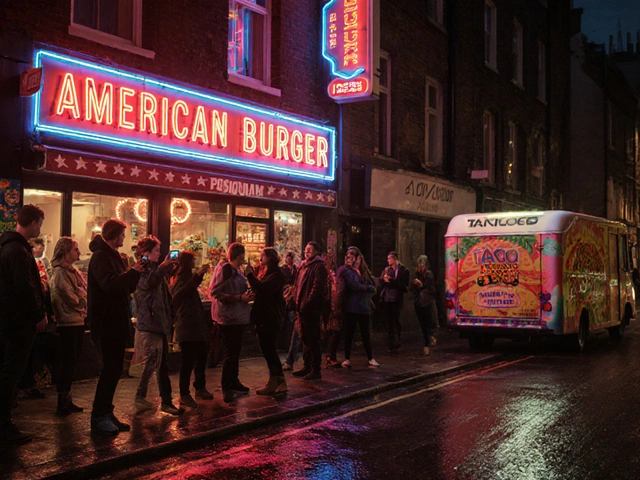
Oct 10 2025
Jan 25 2025

